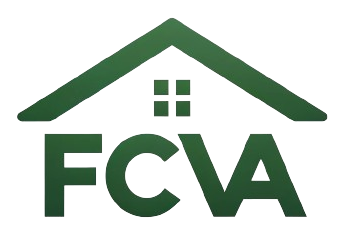How To Handle Repairs You Can’t Afford Before Selling
Have you ever found yourself staring at a long list of repairs needed in your home, feeling overwhelmed by how to tackle them all before selling? It’s a situation many homeowners face, and it can be incredibly stressful, especially when you’re also dealing with the prospect of moving on to your next chapter. We’ve been there ourselves, and we understand the challenges that come with wanting to sell your home quickly while faced with repair bills that seem insurmountable.
In this article, we’ll walk through practical steps to handle the repairs you can’t afford before selling your home. We’ll share some insights on how to navigate this obstacle effectively, ensuring that we make informed decisions that benefit our selling process.
Understanding the Impact of Repairs on Your Home’s Value
Before we jump into ideas and options, let’s reflect on why repairs matter when selling a home. The condition of our property plays a significant role in determining its market value. Buyers are often looking for homes that are move-in ready, and if they see a laundry list of repairs needed, they may be less inclined to make an offer or may offer less than what we believe our home is worth.
Identifying essential repairs versus cosmetic fixes is crucial here. Essential repairs are those that affect the safety or livability of our home, such as electrical issues, plumbing problems, or structural concerns. Cosmetic fixes, on the other hand, like repainting walls or landscaping, enhance aesthetic appeal but are often less urgent. Understanding this differentiation will guide our decisions moving forward.
Options for Handling Repairs
When faced with repairs that we can’t afford, we have several roads to consider. Each option comes with its own advantages and drawbacks, so let’s look at them closely to determine what suits our situation best.
1. Prioritize Essential Repairs
First and foremost, we should take a hard look at the most pressing repairs. Are there issues that could deter buyers completely? Fixing leaky pipes or addressing safety hazards should be our top priority. We may not be able to tackle everything, but by focusing on essentials, we can make our home more appealing without breaking the bank.
2. Get Creative with Financing Options
If our cash flow is tight but a few necessary repairs are essential to close the deal, seeking creative financing could be a viable option. From personal loans to home equity lines of credit (HELOC), exploring our financing options might help us raise the funds needed for repairs. It’s always wise to weigh the costs and benefits of such decisions, especially in relation to how much we expect to gain from the sale.
Talking to Your Realtor
If we’re still feeling lost or overwhelmed, reaching out to a local real estate agent can provide us with clarity. These professionals often have insights into what repairs yield the greatest return on investment. They can assist us in understanding which repairs might be unnecessary or if we should instead offer concessions to buyers, such as covering repair costs through a price reduction.
3. Consider Selling “As Is”
Another option for us is to sell our property “as is.” This route allows us to bypass repairs altogether and may attract buyers looking for investment opportunities. However, we should keep in mind that selling as is might lead to a lower sale price compared to a home in better condition. It’s wise for us to do a bit of research to find out how much homes in similar conditions have sold for in our area.
4. Negotiating with Potential Buyers
If we manage to find a buyer, we can take advantage of negotiations. For example, we can agree to lower our selling price to accommodate the repairs that buyers may want done post-sale. This strategy allows us to transfer some responsibility to the buyer while still making a competitive offer.
Budget-Friendly Repair Ideas
While it’s always better to consult professionals for major repairs, there are budget-friendly fixes we can implement ourselves that might improve our home’s appearance and functionality. Here are some suggestions:
| Repair Type | DIY Approach | Estimated Cost |
|---|---|---|
| Exterior Curb Appeal | Freshen up landscaping; plant flowers; mow the lawn | $50-$200 |
| Interior Cleaning | Deep clean carpets; scrub bathrooms and kitchens | $50-$150 |
| Minor Repairs | Patch holes; repaint walls or cabinets | $30-$300 |
| Lighting Fixtures | Replace outdated light fixtures with modern options | $50-$200 each |
Even small changes can elevate the perceived value of our home and draw potential buyers’ attention.
Hiring Professionals for Essential Repairs
If we feel out of our depth with certain repairs, it might be time to bring in professionals. Here’s how we can go about finding the right help without overspending:
-
Seek Recommendations: Ask friends or family for trusted contractors or check local online reviews to find reliable professionals.
-
Request Estimates: Getting multiple estimates ensures we know our options and can select who fits our budget best.
-
Negotiate: Don’t hesitate to discuss pricing or request a discount, especially if we plan on significant work that could result in referrals in the future.
Understanding Buyer Expectations
In the fast-paced real estate market, buyers often have specific expectations regarding home condition. They’re looking for homes that feel clean, safe, and well-maintained. We can improve our chances by understanding these expectations and making adjustments where feasible.
1. Quality over quantity
It may serve us well to focus on a few high-impact areas instead of trying to address every potential issue. A beautifully staged living room or kitchen can do wonders for first impressions.
2. Transparency is Key
If we opt to sell as is, we can build trust with potential buyers by being transparent about known issues. Sharing repair history or inspection reports upfront can prevent complications later.
Moving Forward: What to Do After the Repairs
Once we’ve made necessary repairs or decided on an “as is” sale, it’s time to focus on what comes next in the selling process.
1. Professional Appraisal or Inspection
Having a professional appraisal or inspection done can help us understand our home’s current market value. It sets realistic expectations for pricing, even if we’re selling as is.
2. Crafting a Great Marketing Strategy
At this point, ensuring our home stands out is crucial. High-quality photos and a compelling listing description will highlight our home’s best attributes and attract more potential buyers.
3. Consider Engaging with Cash Buyers
Given our focus on a quick sale, engaging with cash buyers can alleviate the stress of repairs. At FastCashVA.com, we specialize in providing fair cash solutions for sellers in tough situations, allowing us to move on swiftly without extensive repair requirements.
The Bottom Line: Empowering Our Selling Journey
Though the challenge of managing repairs before selling can feel daunting, it doesn’t have to be overwhelming. By understanding our options, prioritizing essential repairs, and seeking assistance where necessary, we can turn our situation around. Whether we decide to sell as is or invest in key repairs, we can approach the sales process with a sense of confidence.
By taking control of the repair situation and preparing our home strategically, we are setting ourselves up for success. Remember, we have options! With the right guidance, we’ll find a way to achieve our real estate goals without unnecessary stress.
Through our journey, we remind ourselves that selling a home is often a step toward new beginnings. With clarity, support, and informed decisions, we can navigate the selling process smoothly, no matter what challenges lie ahead.
Ready to sell your house fast in Virginia? FastCashVA makes it simple, fast, and hassle-free.
Get your cash offer now or contact us today to learn how we can help you sell your house as-is for cash!
Disclosure: As an Amazon Associate, I earn from qualifying purchases.



